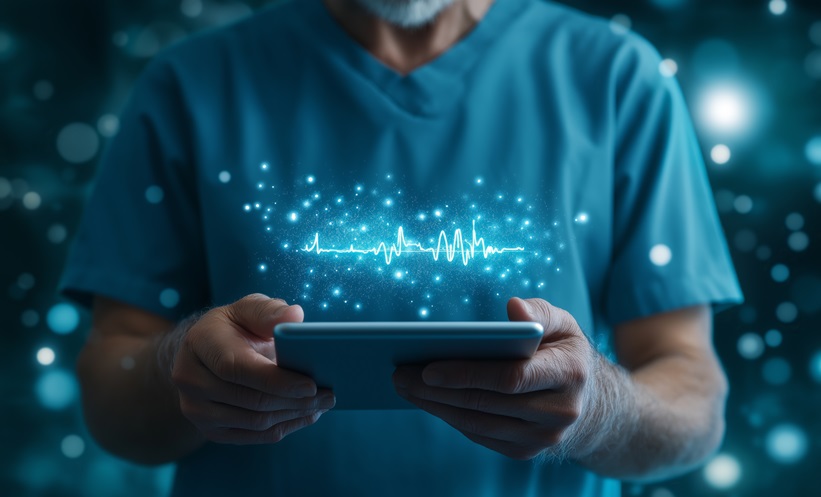INTRODUCTION
From wearable devices to smartphone apps, there has been an explosion of technology in recent years that promises unique insights into users’ health and wellbeing. For the digitally savvy, it has become increasingly common to track multiple aspects of their health, from dietary habits and activity levels to mental health symptoms and menstrual cycles, to name but a few. Many clinicians might have seen this increasing use first hand, in part driven by the use of remote consultations during the COVID-19 pandemic. History of palpitations? Here is an ECG reading from my smartwatch. How did the antidepressant help your mood? Here is an app with a record of my emotional state over the past month, with helpful mood-related emojis to boot.
This type of information, encompassing not only digital biometrics, but also symptom tracking, medical history, and self-reported health status, is collectively known as patient-generated health data (PGHD).1 It represents a nascent field that could transform healthcare in years to come.
From treatment monitoring to tailored healthcare information, PGHD could drive a more personalised, holistic model of clinical care, rather than a ‘one size fits all approach’. In addition, by capturing longitudinal health data in the ‘real world’, PGHD can offer unique insights into the natural history of diseases, which can be difficult to gather during isolated clinic appointments. Proponents suggest that this could identify as yet undiscovered digital biomarkers that could allow for treatment and care earlier in the disease course.1
Despite this promise, the growing adoption of PGHD raises questions on its use in already overstretched health systems. How do we use PGHD to improve patient care in a meaningful and equitable way, without drowning in an avalanche of healthcare data?
LEVERAGING PATIENT-GENERATED HEALTH DATA FOR PATIENT BENEFIT
To answer the question of how to leverage PGHD to benefit patients, we need to understand where PGHD can add the most value. During the COVID-19 pandemic, PGHD apps, like the ZOE symptom tracker (ZOE, London, UK), for COVID-19, played a useful role in understanding the spread of the virus.2 As such, PGHD could clearly be a useful adjunct to more traditional epidemiological methods in mapping the spread of infectious diseases in ‘real time’.
If we take a broader public health perspective, there are other important use cases for which PGHD could be transformative too. This includes non-communicable diseases such as cardiovascular disease, cancer, and respiratory conditions. The World Health Organization (WHO) estimates that non-communicable diseases account for 74% of all deaths globally.3
Importantly, the risk of developing these conditions can be reduced by health prevention, such as exercising and stopping smoking. A recent global report highlighted the importance of addressing such risk factors as our best hope for reducing the future burden of cancer.4 PGHD could be a powerful way to encourage and monitor these factors, such as improving exercise uptake or providing tailored lifestyle advice that could ‘nudge’ patients towards healthier behaviour.
MAKING SENSE (AND USE) OF THE DATA
Despite this potential, most PGHD tools at present are limited in their scope and impact. This includes standalone apps that often do not even integrate into the patient’s electronic health record, let alone their overall care. Also, despite promising research on emerging PGHD-derived biomarkers, there is a lack of high-quality, real-world studies that can help to differentiate between the types of data that will have the greatest benefit for clinical care.
In addition, the integration of PGHD into the daily workflows of clinicians remains limited. This is, in part, due to constraints of overstretched health systems, including creaking infrastructure and archaic electronic health record (EHR) systems. In many settings, it can be difficult to share PGHD, whether it be a compilation of blood pressure readings or a smartwatch ECG, directly into EHRs. This is a key barrier for routine clinical use.
To overcome this, improving interoperability between PGHD applications and EHRs is vital. The development of the SMART on Fast Healthcare Interoperability Resource (FHIR) interoperability standard is an important milestone in this regard.5 This open source framework allows for ‘plug and play’ of health applications directly into EHRs, allowing patients to share data with clinicians, and vice versa. Adoption is mainly confined to the USA at present, but there is growing interest from the National Health Service (NHS) and other national health systems.
PATIENT-GENERATED HEALTH DATA IN THE CLINIC
Given these challenges, time-poor clinicians may well view PGHD as more of a ‘wellness culture’ fad than a technology that truly heralds promise for patient care. How can we counter such concerns, and promote the use of PGHD in the clinic? To complement the advances in interoperability, it is imperative that we also develop PGHD-specific workflows for clinicians.
A good first step could be to combine validated PGHD types in routine clinical practice. This includes using longitudinal, multimodal data to inform care, a pragmatic short-term goal whilst research on novel data types is ongoing.
Take the example of patients presenting with insomnia without a clearly identifiable cause. In such cases, sleep tracking from wearables (biometric data) could be combined with symptom tracking (i.e., lifestyle factors) and a 9-question Patient Health Questionnaire (PHQ-9) depression screen (a type of patient-reported outcome measure that gives a snapshot of a patient’s health) to identify underlying causes.
Another potential area is the remote monitoring of patients using PGHD-based mobile apps, which is an emerging model in some health systems. For example, patients with hypertension can be offered a personalised plan to titrate their medication, with information shared with clinicians in real time. This method combines symptom tracking and biometric information to promote adherence and shed light on adverse side effects.
THE FUTURE
PGHD is here to stay, and it is likely to become a cornerstone of digital healthcare delivery in years to come. As clinicians, we have the opportunity to help shape this emerging field, together with patients, to herald a paradigm shift towards more holistic and personalised care.
However, there remain key barriers to this aspirational goal. These include a nascent interoperability infrastructure, unanswered questions on clinical benefit, and challenges in access to digital technologies for underserved populations.
To overcome these issues, we need a rigorous focus on the clinical utility of PGHD and its equitable integration into existing health systems. Without such a patient centred approach, rather than fulfilling the transformative potential of PGHD, we risk a fragmented digital landscape that fails to meet the needs of those we serve.







